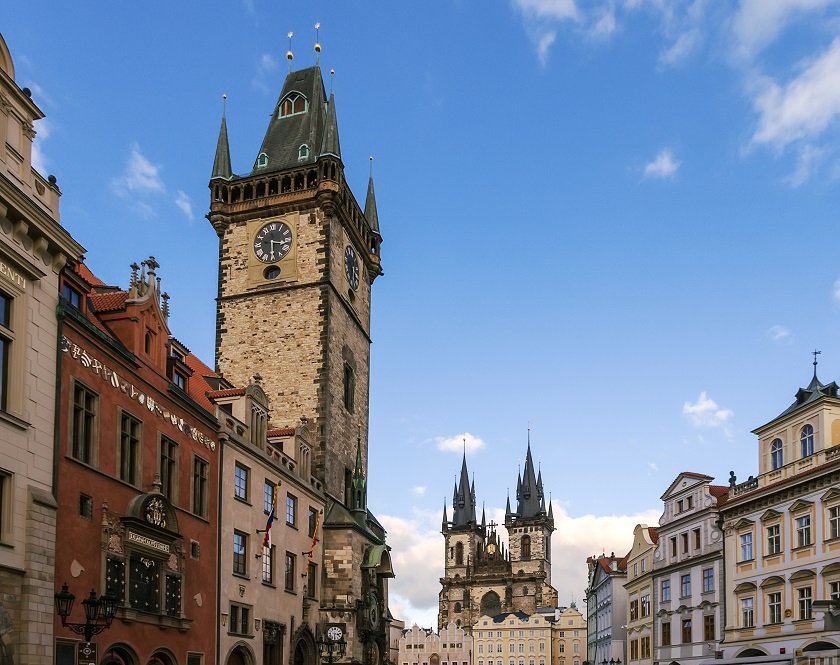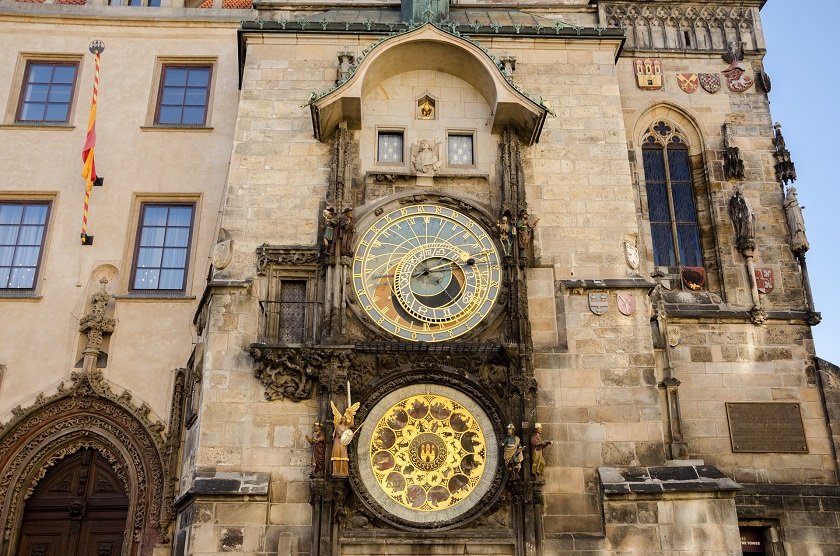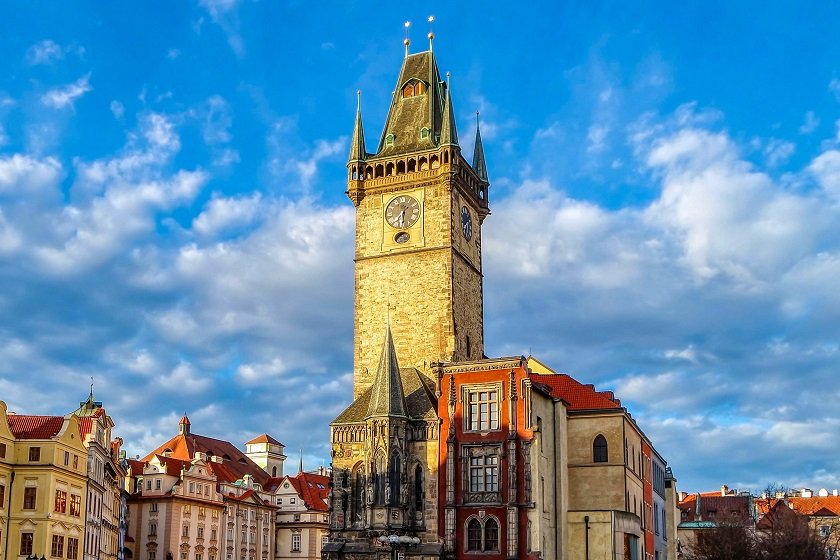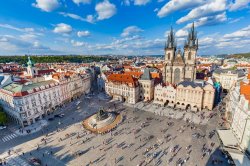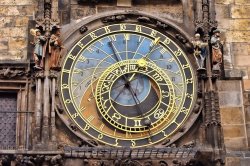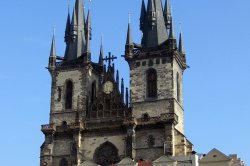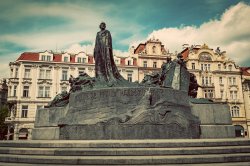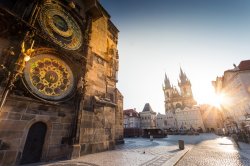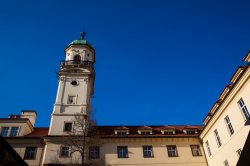Old Town Hall
The Old Town Hall is a complex of several Gothic buildings with a clock tower and the Astronomical Clock on the Old Town Square in Prague’s Old Town. A 13th-century Gothic house that belonged to rich merchant Woflin of Kámen formed the foundations for the Town Hall. Other parts were added later: a 70-metre tall tower with a Gothic chapel, a second town hall house with a council hall (today’s wedding hall) and also the Mikeš House. The façade of the Town Hall Tower is decorated with the Prague Astronomical Clock, a 600-year-old mechanical tower clock. The interiors of the Old Town Hall include historical halls with valuable paintings, a Gothic Chapel with a view of the 12 apostles of the Astronomical Clock, and Romanesque-Gothic underground chambers. Visitors can take a glass lift up to the Gothic tower, which offers a beautiful view of the Old Town Square, St Nicholas Church, the Church of Mother of God before Týn and also Prague Castle in the distance. Visitors can take either a guided group tour or an individual tour (groups of more than 10 people must book in advance). The complex holds a permanent exhibition called the Old Town Hall down the Centuries with 100 historical photos, which introduces visitors to the construction history and some major events.
Useful information for visitors
Public transport connections
Staroměstská bus stop, tram stop, metro station (green line)
Můstek metro station (green, yellow line)
Opening hours and admission
For up-to-date information about the admission fees and opening hours of the Old Town Hall, visit the official website.
Interesting facts about Old Town Hall
The façade of the Old Town Hall is decorated with the oldest mechanical clock in the world – the Astronomical Clock, which not only shows the date and time, but also tracks the position of the Moon and the Sun in the sky and displays astronomical cycles and holidays in the Christian Calendar. It was made by clockmaker Mikuláš of Kadaň in 1410. Every hour (9am – 11pm), the Astronomical clock comes alive with a procession of 12 apostles appearing in the two small windows above the clock. These have nothing to do with the measuring of time, but serve as mere decoration.
